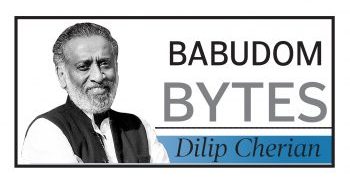By Shivaji Sarkar
The Bihar election delivered a clear mandate, but the celebrations mask a harder truth: the state is walking into a period of acute fiscal strain powered by an explosion of welfare promises. The politics worked; the economics now begins to bite. The immediate political gains from targeted benefits and cash transfers are undeniable. They create visible impact, reach millions quickly, and generate electoral goodwill. But the economic price of these commitments is now coming into sharper focus. It is to be observed how such a massive mandate would impact or reshape Bihar’s economy.
Early assessments suggest that the NDA’s new welfare promises could cost over Rs 40,000 crore in FY26—approximately 4% of Bihar’s GDP, Rs 2 lakh crore in five years. For a state already operating with tight fiscal margins, this is not just a budgetary challenge; it signals a structural shift in how development would be financed or get constrained. Bihar’s public debt has surged to Rs 4.06 lakh crore, with the state paying or Rs 63 crore in daily interest or Rs 23014 crore for 2025-26. It plans net borrowings of Rs 32,918 crore, pushing its debt-to-GDP ratio to nearly 40%—one of the highest in India. This is despite the state recording strong nominal GDP growth of roughly 11% over the past decade. Bihar is not alone in adopting expansive welfare promises.
Across India, welfare spending has become central to election campaigns. But Bihar’s situation is distinct because of its economic baseline: low per-capita income, limited industrialisation, high dependence on central transfers, and a workforce heavily reliant on migration. In such a context, the political incentive to use welfare as a compensatory mechanism becomes overwhelming.
Over the past decade, Bihar has received far higher central financial support under the NDA government compared to the UPA period. Between 2004 and 2014, Bihar received about Rs 2.8 lakh crore, whereas between 2014–2024 it received roughly Rs 9.23 lakh crore—a threefold increase. The addition of Rs 40,000-plus crore in welfare commitments dramatically narrows fiscal flexibility. To finance these schemes, Bihar must do one of these things: Borrow more, increase its debt-to-GSDP ratio, cut capital spending, slow long-term growth, depend even more on central transfers, or reduce autonomy. Higher borrowing inflates debt servicing, reduces capex suppresses employment and growth, and heavy dependence on the Centre erodes Bihar’s independent policy capacity. Economists often distinguish between welfare that builds capacity and welfare that buys political loyalty. The former includes school meals, health investments, education subsidies, and skill-building programmes. The latter tends to involve unconditional cash transfers, consumption subsidies, or politically timed giveaways. Bihar’s new welfare package contains some elements of capacity building but is largely tilted toward political consumables. When welfare becomes permanent and productivity remains stagnant, a state risks entering a freebie trap: rising fiscal commitments without corresponding increases in economic output. Bihar’s development challenge has always been structural: how to generate jobs within the state so workers don’t have to migrate. The NDA’s manifesto promise of 10 million jobs is ambitious, but job creation on this scale requires deep reforms—industrial land availability, reliable power, simplified regulations, agro-processing capacity, and public-private partnerships.
Every rupee diverted toward recurring welfare is a rupee not invested in these foundations. Large welfare schemes create an illusion of progress— mask the absence of long-term reforms. This is where the political-economy risk becomes visible. Welfare can secure the next election, but development secures the next generation. When political incentives favour the former over the latter, states stagnate. Bihar’s fiscal stress matters not only for the state but for India’s broader economic trajectory. If Bihar’s growth slows because of fiscal overextension, national-level effects may follow: greater pressure on central finances, as Bihar seeks more grants and transfers; slower demographic dividend realisation, as a large young workforce remains underemployed. The Centre faces a difficult balancing act. Too much central support could embolden other states to pursue fiscally unsustainable models.
Bihar must rationalise welfare, broaden revenues, and prioritise growth-focused capital investment to avoid fiscal strain and convert election promises into sustainable development. Without clear prioritisation, Bihar risks drowning in its own promises. The Bihar election has reshaped the political landscape, but it has also placed a heavy economic burden on the state’s future. Welfare-driven politics may deliver votes, but it may not deliver the development Bihar desperately needs. The next five years will determine whether Bihar uses its political mandate to break from the freebie trap—or sinks deeper into it. The fiscal path it chooses is no longer just a state issue; it is a national economic variable with implications far beyond Patna.






































